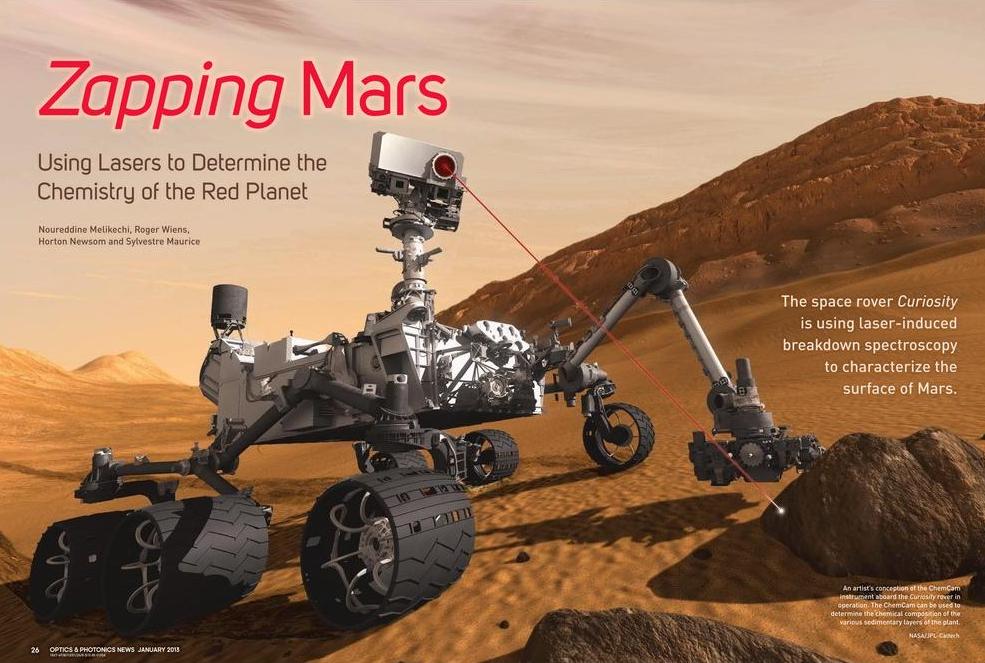
My research is targeted toward two areas:
- the biomedical applications of optical and laser-based technologies (diffuse reflectance spectroscopy, laser-induced breakdown spectroscopy, and Raman spectroscopy) in medical and biomedical physics
- the use of pulsed laser sources in laboratory astrophysics measurements (fundamental atomic physics measurements on ionic species of interest to observational astronomers) and AMO experiments.
These are highly interdisciplinary experiments which require close collaborations (past and present) with many non-physics researchers including colleagues (for example) in the Department of Biological Science, Department of Immunology and Microbiology, Henry Ford Hospital (Detroit), Detroit Medical Center, Department of Geology, Department of Civil and Environmental Engineering, Department of Developmental Dentistry, Windsor Regional Hospital/Windsor Regional Cancer Clinic.
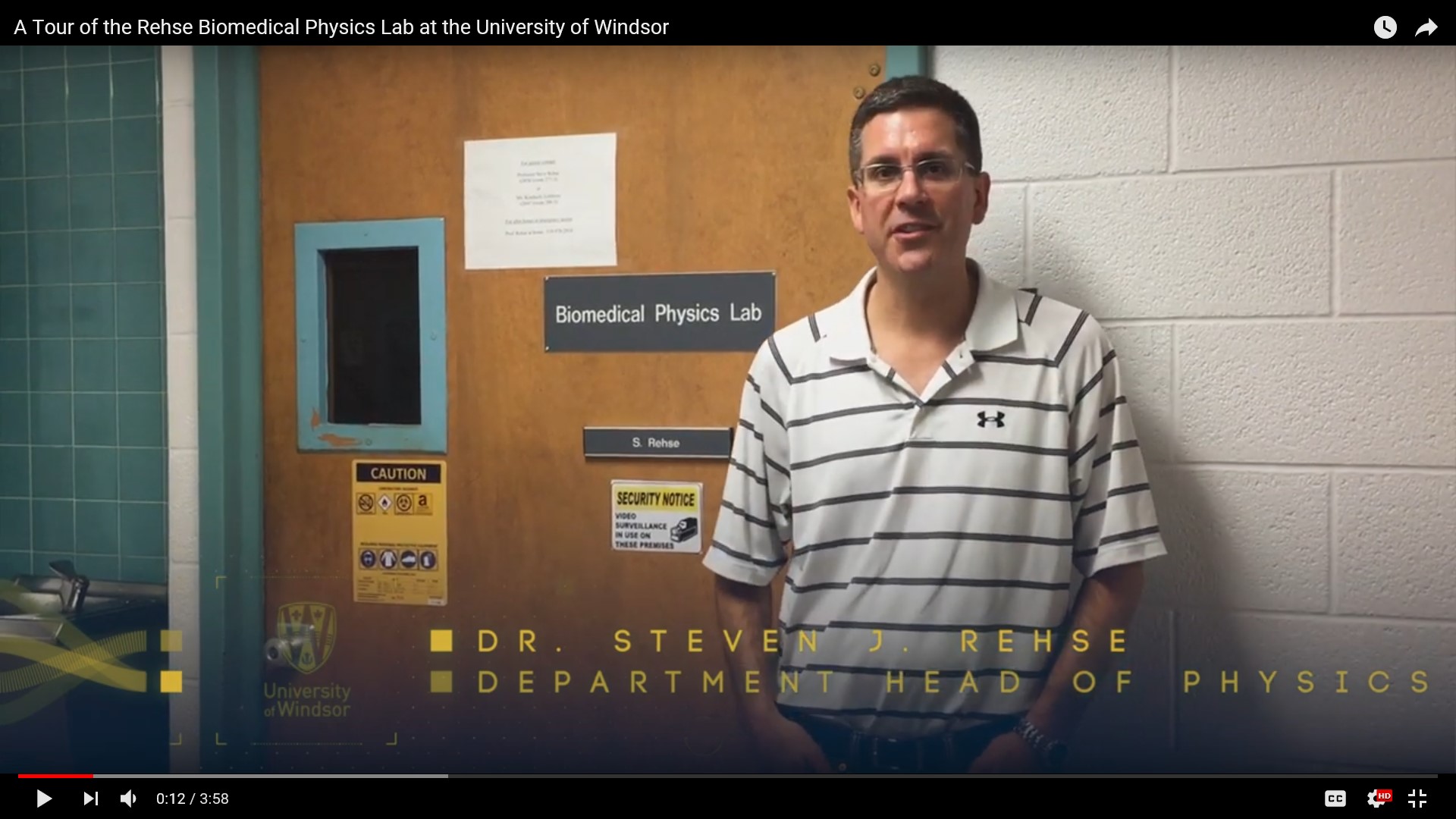 The main goal of my recent research has been the rapid (under five minutes) and accurate identification of pathogenic bacteria in clinical specimens using only laser-based spectroscopic methods. The use of optical spectroscopies to biochemically (atomically and molecularly) characterize live bacteria offers an entirely new paradigm for modern microbiology. The development of such a robust and safe technology could dramatically alter many facets of human health and safety, clinical medicine, environmental monitoring, and industrial hygiene compliance.
The main goal of my recent research has been the rapid (under five minutes) and accurate identification of pathogenic bacteria in clinical specimens using only laser-based spectroscopic methods. The use of optical spectroscopies to biochemically (atomically and molecularly) characterize live bacteria offers an entirely new paradigm for modern microbiology. The development of such a robust and safe technology could dramatically alter many facets of human health and safety, clinical medicine, environmental monitoring, and industrial hygiene compliance.
VIDEO!
Click on the picture at right to watch a YouTube video filmed and edited by students in the Rehse Lab describing some of our current experiments.
Laser-Induced Breakdown Spectroscopy (LIBS) is an extremely powerful and flexible elemental analysis technique that utilizes the energy in a short, intense laser pulse to vaporize or “ablate” a small volume of sample material. The ablated target material (whether solid, liquid, or gas) absorbs enough energy to vaporize and then ionize the constituent atoms, creating a small cloud of plasma (free ions and electrons) that expands rapidly. As the cloud expands and cools, a significant fraction of the ions recombine to form excited atoms, which eventually decay via spontaneous emission to the atomic ground state (the state of lowest energy in the atom).
View Current Research Descriptions (with student opportunities)
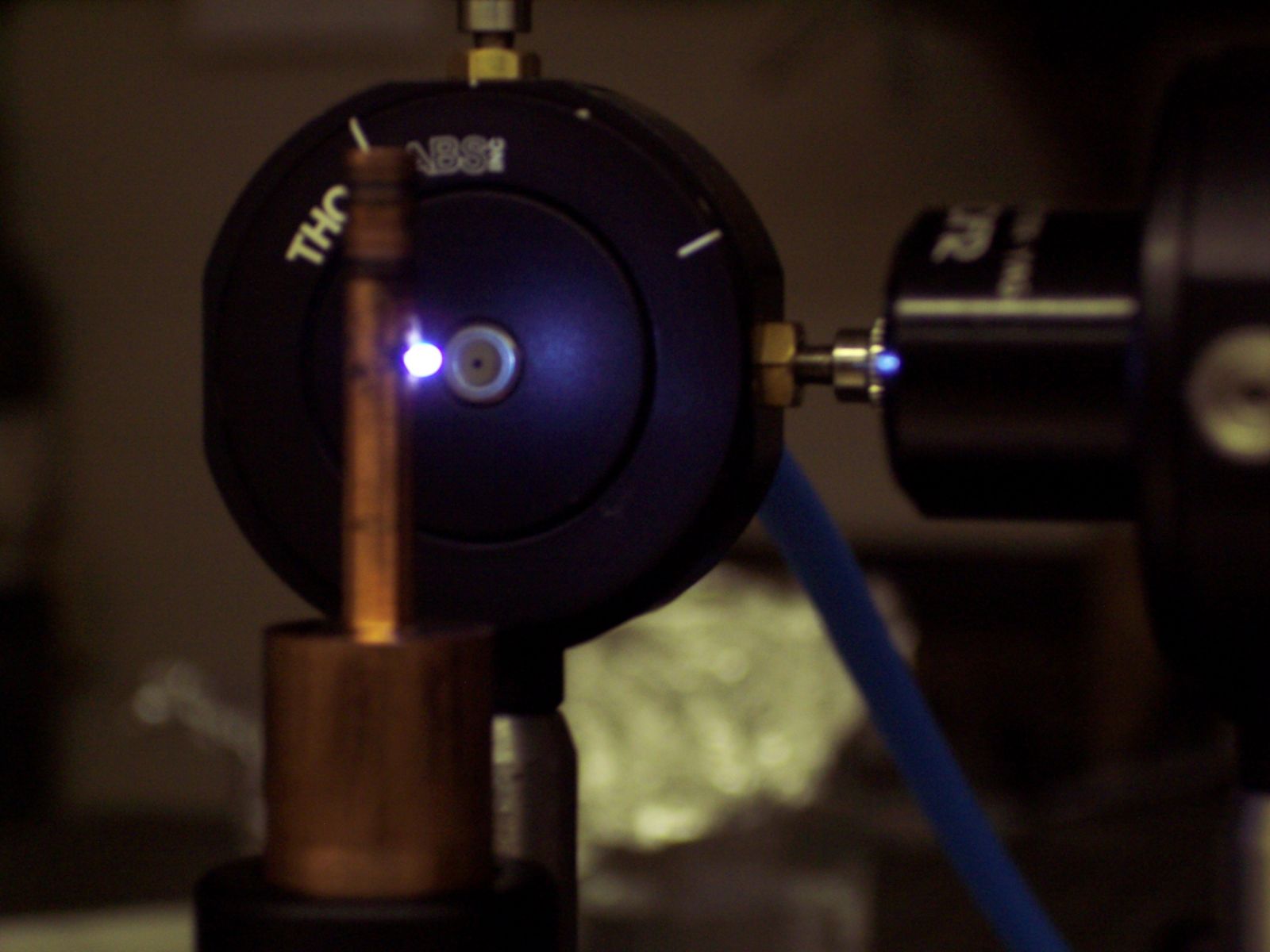
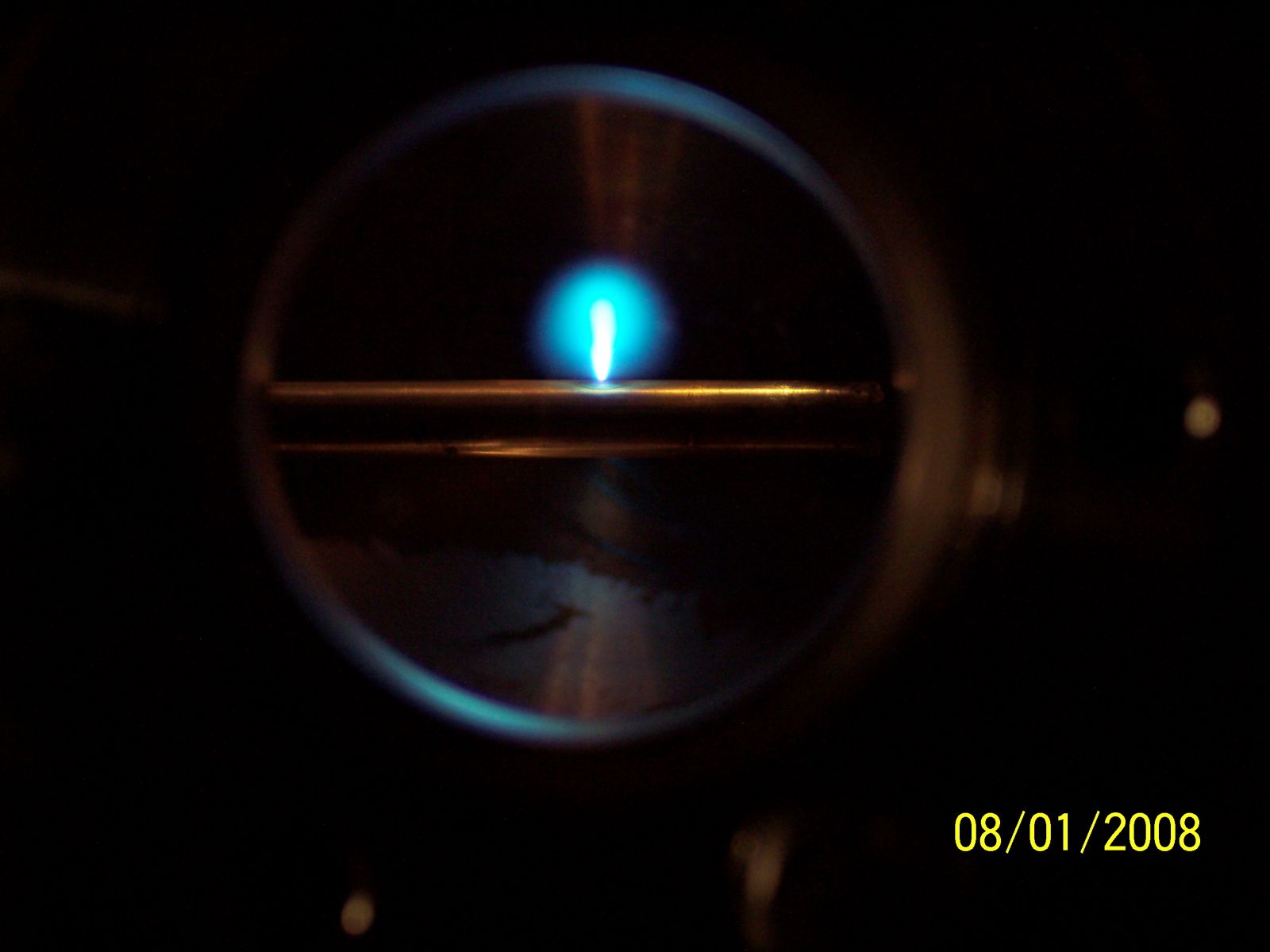
The photons given off during spontaneous emission can be collected and spectrally analyzed which provides a “spectral fingerprint” of all the constituent elements of the target and the plasma. Since each element has a unique spectral fingerprint, relative and absolute elemental concentrations within the target material can be determined. Theoretically, this measurement can be accomplished with one laser pulse (about 10 ns), resulting in a very rapid analysis of the target (total measurement time less than one second). Because the target material is interrogated by a laser beam and the plasma is analyzed by “all–optical” techniques, the analysis can be performed remotely or on hazardous materials. Clicking on the LIBS link will give you a quick description of the process.
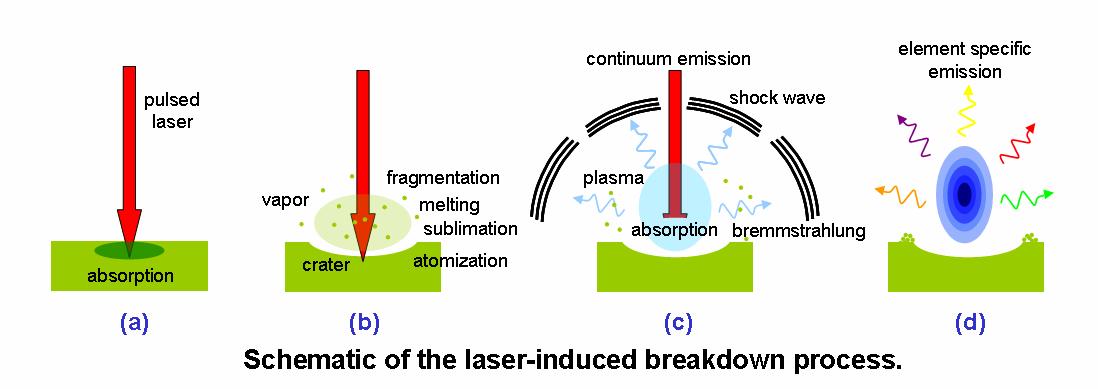
LIBS on Mars rover "Curiosity"
In the news right now is the use of LIBS on the Mars rover "Curiosity." This particular application made the front page of the January 2013 issue of "Optics & Photonics News".
LIBS-LIF or laser-induced breakdown spectroscopy/laser-induced fluorescence
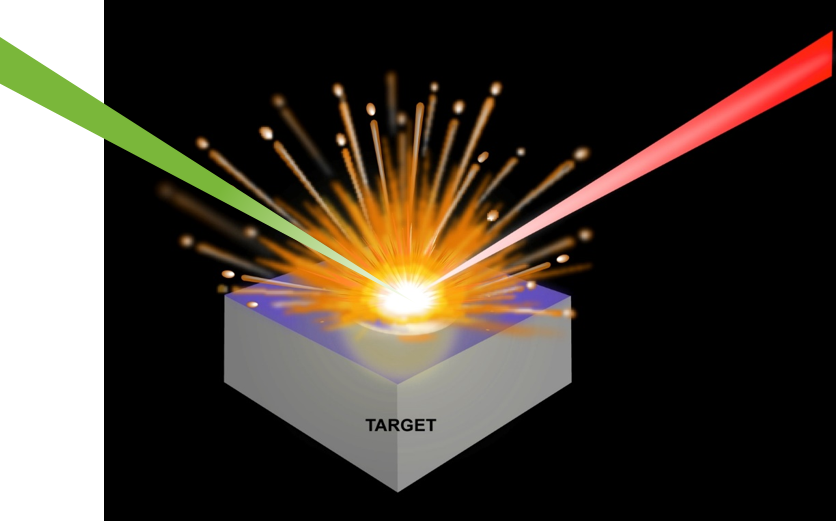
To improve the sensitivity of LIBS, many “hyphenated techniques” are being investigated which use LIBS and a second modality to enhance optical emission. We are investigating LIBS-LIF or laser-induced breakdown spectroscopy/laser-induced fluorescence.
In this technique we illuminate the LIBS plasma with a second resonant laser pulse generated by our optical parametric oscillator, OPO. By doing so, we excited only the atoms or ions that are resonant with the later pulse, great decreasing emission from unimportant background atoms.
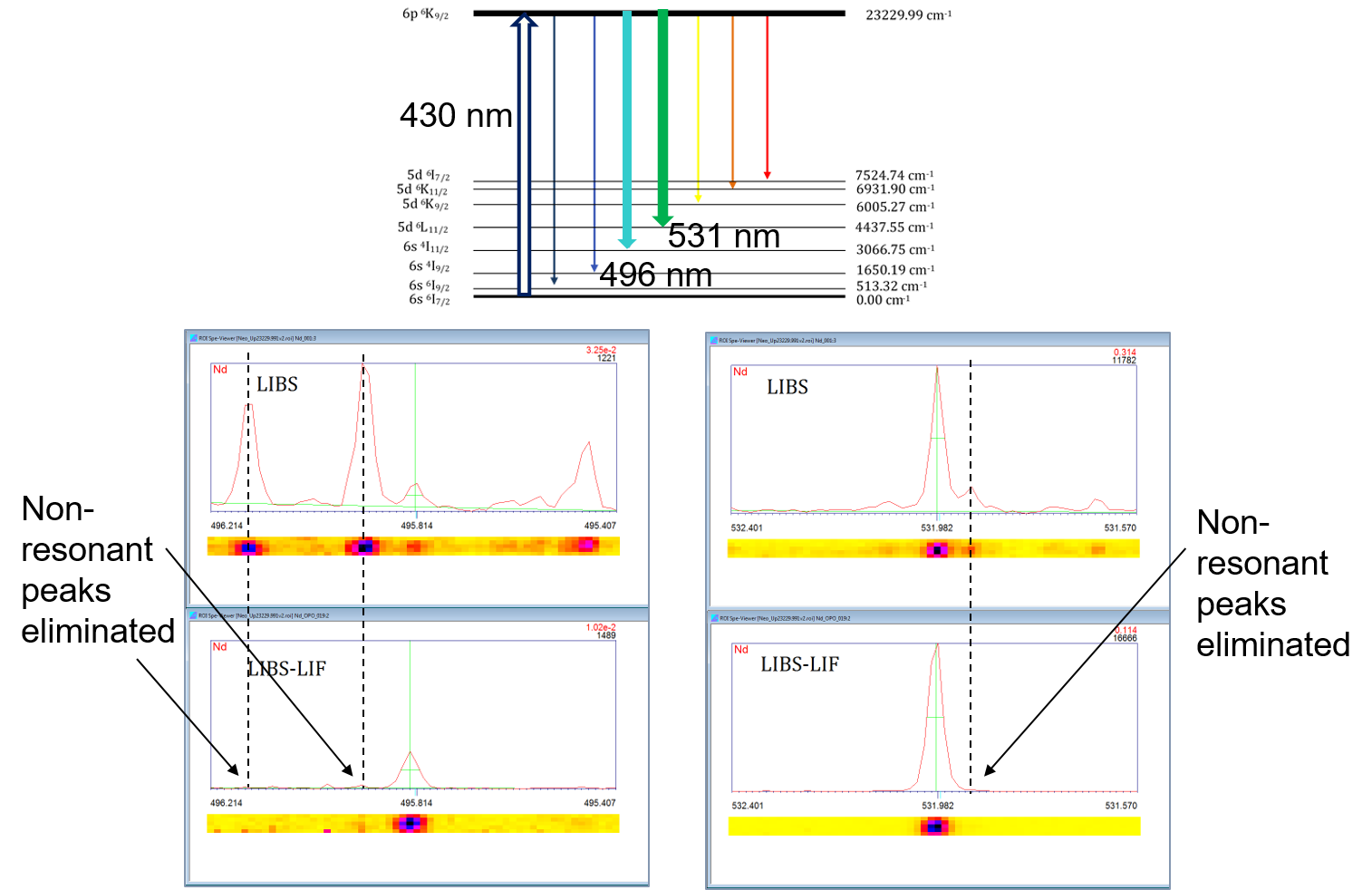
Laboratory Astrophysics
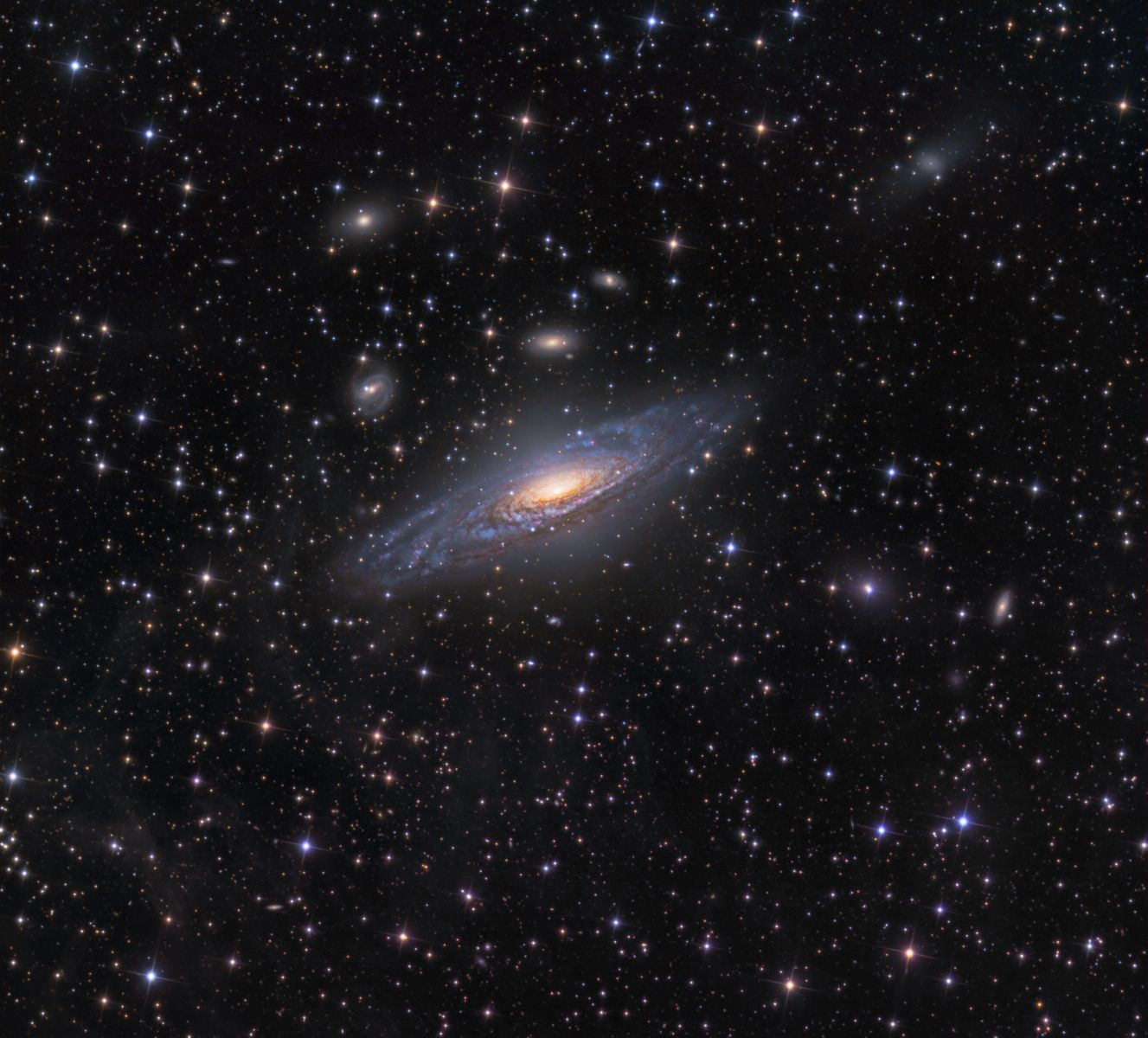
Laboratory Astrophysics is the study of the atomic properties of atoms and/or ions that are of spectroscopic interest to observational and theoretical astronomers. Our research is focused on using a pulsed laser apparatus to generate an intense source of highly excited neutral atoms and ions. In particular, we are attempting to make branching ratio measurements and lifetime measurements of these highly excited states.
We are focusing initially on the singly-ionized states of the lanthanide elements, in particular neodymium, and also gallium. Absorption lines of singly-ionized neodymium have been observed in certain "chemically peculiar" (CP) stars and lines of singly-ionized gallium have been observed in HgMn stars.
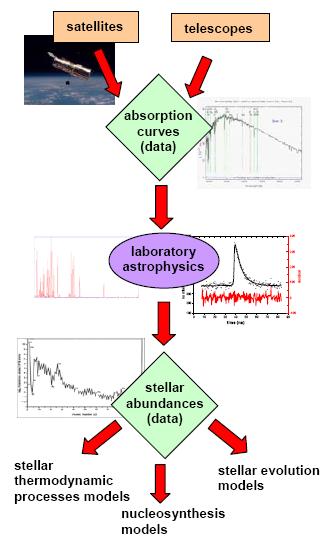
Our measurements of atomic properties help to relate these absorption lines to absolute abundances of the elements in the star. These abundances are then used to refine models of nucleosynthesis, the process whereby many of the elements of the universe are made, and models of stellar evolution, which can help determine how the elements are distributed throughout the star.
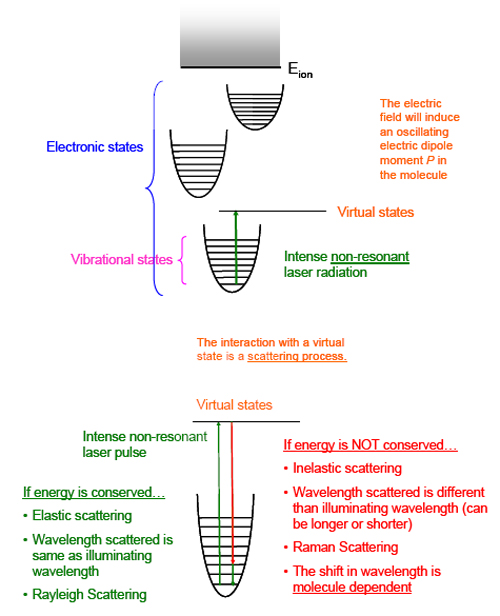
Raman spectroscopy is a versatile molecular vibrational technique that has only recently been widely applied for identification purposes in microbiology. In this application, a laser beam is non-destructively incident upon a bacterial target and the inelastically scattered light is carefully dispersed. Because this is a non-resonant process, almost any wavelength of laser light will work. Shifts in the scattered photon energy corresponding to vibrational modes in the molecules of the target are then measured to determine molecular composition. This technique has been effectively used by others on bacterial slurries, to probe bacterial colonies, to identify and discriminate medically important microbes including E. coli, Klebsiella spp., Enterococcus spp., Proteus mirabilis, Staphylococcus aureus, Candida strains, Pseudomonas spp., and even to probe individual microbial cells.
The Research
Our research is targeted toward two areas: the biomedical applications of laser-based technologies (both LIBS and Raman spectroscopy) and the use of pulsed laser sources in laboratory astrophysics measurements (these are fundamental atomic physics measurements on ionic species of interest to observational astronomers.)
To date, most of the experiments have focused on exploiting the advantages of LIBS, and these projects are detailed below. Projects with a biomedical thrust are marked with a DNA strand symbol. ![]()
Active Research Projects (Winter 2013)
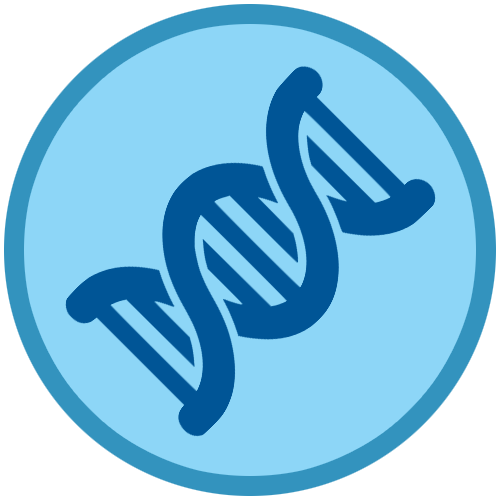 LIBS as a tool to detect and identify bacteria
LIBS as a tool to detect and identify bacteria

In just the last three years, it has been determined that LIBS can be utilized to efficiently and rapidly discriminate between bacterial specimens, even down to the strain level, on the basis of the atomic spectrum alone. Our laboratory has now become one of the pre-eminent institutions in the world in the use of LIBS to rapidly identify pathogens. We are conducting a very active research program to bring this very new diagnostic technology to development. When we use LIBS to identify bacteria, we call this "EMMA", for "Elemental Multivariate Microbiological Analysis."
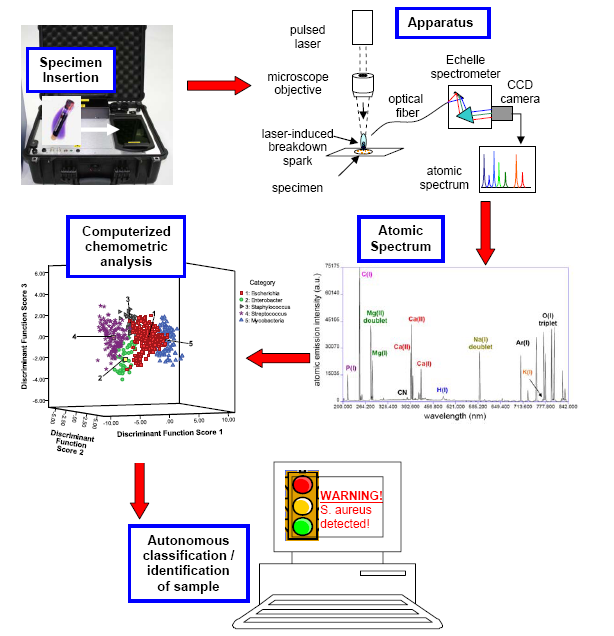
View more presentations at conferences
BIOMAS
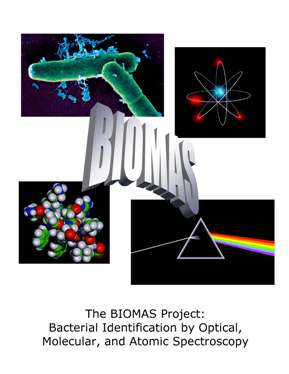
BIOMAS is "Bacterial Identification by Optical, Molecular, and Atomic Spectroscopy". We exploit both LIBS and Raman spectroscopy to rapidly identify unknown bacterial pathogens. BIOMAS is also concerned with "Sensor Fusion" the coupling of LIBS and Raman spectroscopy into a single dual-modality measurement.
Laboratory Astrophysics: Branching ratio measurements and atomic energy level lifetimes
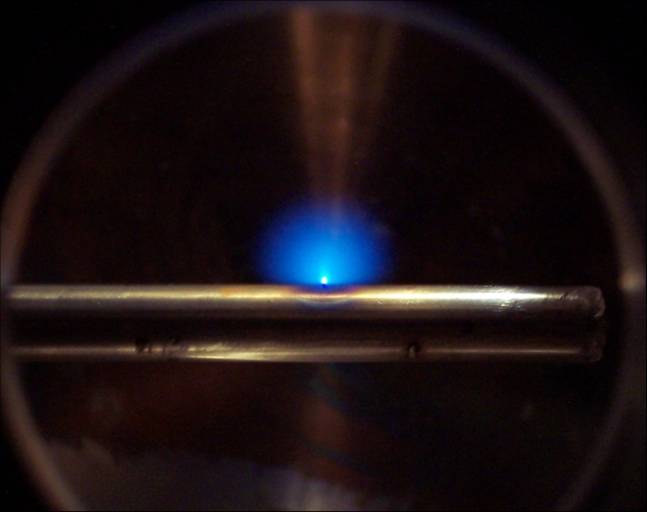
We are currently utilizing our pulsed laser apparatus to do low pressure (10 Torr) LIBS for the purpose of measuring branching ratios in singly-ionized lanthanides. By simultaneously observing radiative decay branches in our laser-induced plasma, absolute oscillator strengths can be determined when combined with accurate atomic energy level lifetimes. We will also attempt to measure these lifetimes with a technique known as "cascade-photon-coincidence", which measures the length of time an atom spends in a particular state prior to a spontaneous emission to a lower-lying level. When combined, these techniques could provide a convenient, relatively straight-forward platform for measuring absolute oscillator strengths.

